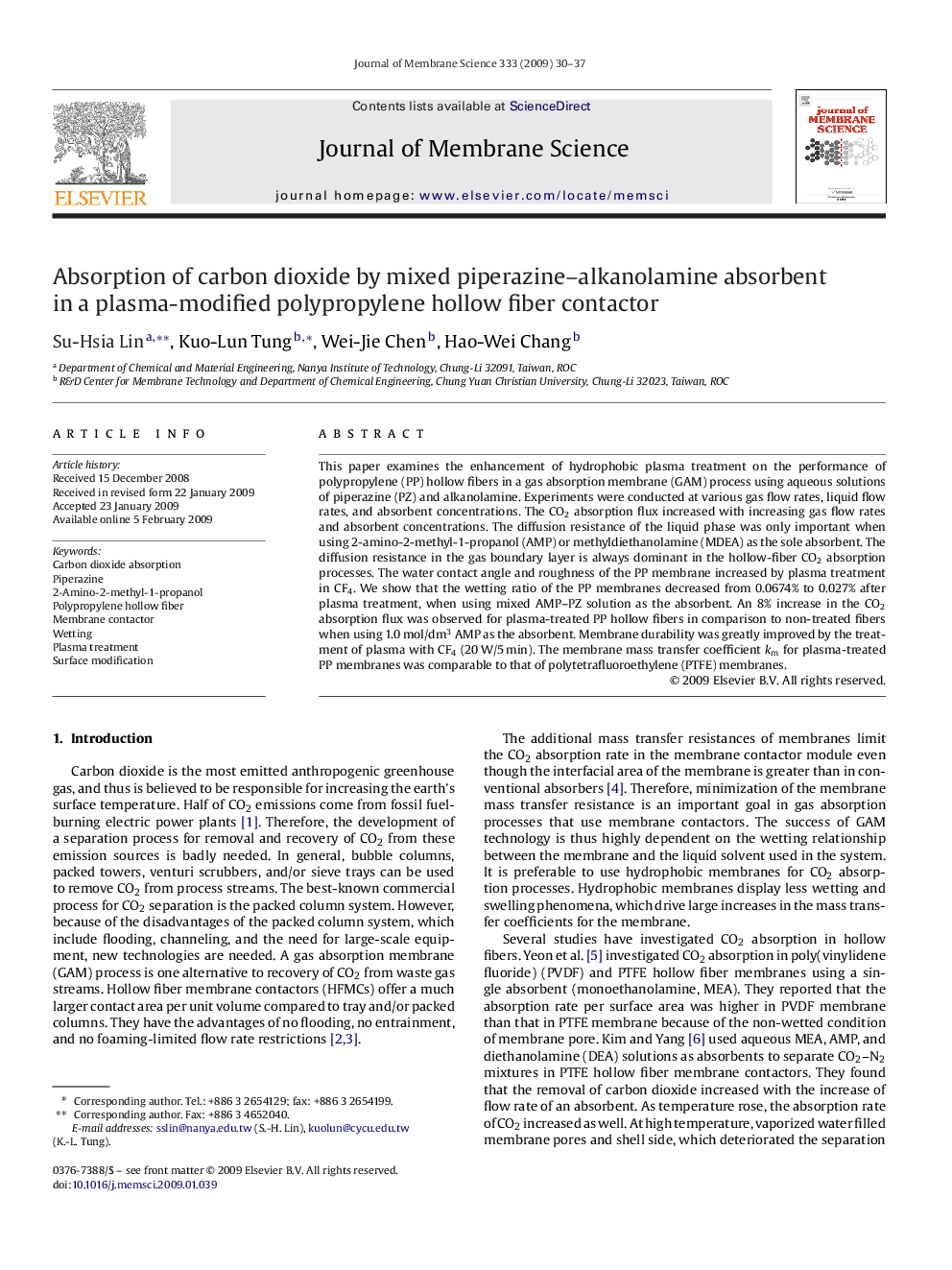| Article ID | Journal | Published Year | Pages | File Type |
|---|---|---|---|---|
| 636981 | Journal of Membrane Science | 2009 | 8 Pages |
This paper examines the enhancement of hydrophobic plasma treatment on the performance of polypropylene (PP) hollow fibers in a gas absorption membrane (GAM) process using aqueous solutions of piperazine (PZ) and alkanolamine. Experiments were conducted at various gas flow rates, liquid flow rates, and absorbent concentrations. The CO2 absorption flux increased with increasing gas flow rates and absorbent concentrations. The diffusion resistance of the liquid phase was only important when using 2-amino-2-methyl-1-propanol (AMP) or methyldiethanolamine (MDEA) as the sole absorbent. The diffusion resistance in the gas boundary layer is always dominant in the hollow-fiber CO2 absorption processes. The water contact angle and roughness of the PP membrane increased by plasma treatment in CF4. We show that the wetting ratio of the PP membranes decreased from 0.0674% to 0.027% after plasma treatment, when using mixed AMP–PZ solution as the absorbent. An 8% increase in the CO2 absorption flux was observed for plasma-treated PP hollow fibers in comparison to non-treated fibers when using 1.0 mol/dm3 AMP as the absorbent. Membrane durability was greatly improved by the treatment of plasma with CF4 (20 W/5 min). The membrane mass transfer coefficient km for plasma-treated PP membranes was comparable to that of polytetrafluoroethylene (PTFE) membranes.
